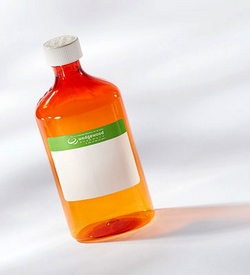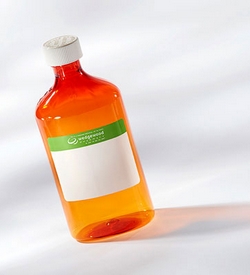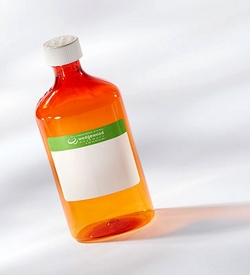Providing Quality & Trust
Furosemide Pimobendan Theophylline Oral Oil Suspension
Wedgewood Pharmacy
Starting at $144.00
$144.00 Each
Detailed Description
Furosemide Pimobendan Theophylline Oral Oil Suspension

Furosemide / Pimobendan / Theophylline Oral Oil Suspension
Prescribed For: Dogs and Cats
May be Prescribed For: Congestive Heart Failure, Bronchospasm and Cardiogenic Pulmonary Edema
If you have any questions concerning these medications, please consult with your doctor.
General Drug Information and Indications
Furosemide is the most commonly used diuretic in veterinary medicine. It is used in dogs and cats as a part of the medical management of congestive heart failure, and other conditions where the body is retaining too much fluid. It is similarly used in horses to treat fluid retention or edema, and to possibly diminish exercise induced pulmonary hemorrhage in racehorses. Diuretics act upon the kidneys, causing increased excretion of both electrolytes and fluids.
Furosemide is used intravenously in emergency settings and orally for longer term maintenance. The diuretic effects of furosemide take place within minutes after intravenous injection, with a peak effect at about thirty minutes. Onset of action after oral administration is about an hour. Furosemide is not recommended for the treatment of most kidney disease. Although it may cause a transient increase in blood flow to the kidneys, it does not improve kidney function and may put the animal at increased risk for dehydration or electrolyte imbalances. Diuretics will do little to relieve fluid accumulation and edema caused by low blood protein or vasculitis and may even worsen the animal's overall condition.
General Drug Information and Indications
Pimobendan is a new and important drug that is used to treat congestive heart failure (CHF) in dogs. Large clinical studies support the use of pimobendan in dogs that have clinical signs of CHF and in breeds of dogs (Doberman pinschers and others) that are at risk for developing CHF. Pimobendan both strengthens the heart's ability to contract, and dilates blood vessels throughout the body. It is an oral medication and in most cases is given with other cardiac medications and diuretics such as furosemide. Recent studies have shown that dogs that receive pimobendan (with other cardiac drugs) both survived longer and had better quality of life scores than dogs receiving alternate cardiac treatments. For some breeds, including Doberman Pinschers, the increased time until the onset of clinical signs and the increase in survival time is dramatic. Dogs with clinical signs of CHF may show improvement within seven days of starting treatment. Cardiac enlargement may be improved within the first month of treatment. Pimobendan is a sufficiently well researched and important new drug. In 2009 the American College of Veterinary Internal Medicine included pimobendan in their consensus statement regarding the treatment of chronic valvular heart disease. Pimobendan is FDA approved for use in dogs. It is sold under the trade name of Vetmedin®. When the appropriate form or dose of this drug is not available through a veterinary pharmaceutical manufacturer, it may be compounded by a specialty pharmacy.
Basic Information
Theophylline is a bronchodilator that is prescribed by veterinarians to help relax the muscles in a patient's lungs and chest so she can breathe easier. It also is commonly used to treat a wide range of pulmonary disorders, such as pulmonary edema, bronchial asthma, and chronic obstructive pulmonary disease, and in rarer cases, heart failure. Theophylline is available in both an oral and an injectable form. It is very well-absorbed after oral administration.
Veterinary Medicine Uses for Theophylline
Theophylline is very effective at relaxing the muscles surrounding the airway and clearing out the mucus that can make breathing more difficult. It helps clear out mucus build-up by increasing the movement of cilia within the airway.
Theophylline also works to strengthen the patient's diaphragm, and this is integral in improving the patient's ability to breathe. Theophylline not only helps the patient breathe easier, but it also helps prevent future breathing constrictions. The drug is structurally similar to caffeine, which works as a central nervous system stimulant.
Theophylline is used in feline asthma and in chronic bronchitis in dogs. Theophylline can be used with corticosteroids and may allow using a lower dose of the corticosteroid. Like many other drugs in veterinary medicine, this drug is not FDA-approved for use in animals and is not available from a veterinary pharmaceutical manufacturer. Instead, it is compounded by a compounding pharmacy.
Potential Side-Effects of Theophylline
Theophylline is appropriate for use on cats and dogs when it is administered under the guidance of a veterinarian. However, the patient can still experience side effects with this drug. Most commonly, the side effects of Theophylline include central nervous system excitement, vomiting, fever, rash, and heart palpitations. In most cases, the side effects can be managed through dosage adjustments, and this will usually cause them to gradually subside over time.
However, if the patient experiences prolonged vomiting or diarrhea, or she develops hives or other signs of an allergic reaction, then she should be taken to the veterinarian as soon as possible.
Many of the milder side-effects occur at the start of therapy but will resolve over time. Some clinicians will start an animal on a lower dose and increase the theophylline to the therapeutic dose after the first week.
Less-common but more-serious side effects include abnormal heart rhythm and seizures. Be sure to discuss any side-effects with your veterinarian immediately.
Drug Interactions with Theophylline
Theophylline has known interactions with several different drug classes, including certain antiarrhythmics, anti-seizure drugs, certain beta-blockers, as well as cimetidine, digoxin, disulfiram, fluvoxamine, interferon, isoproterenol, and many others.
There are a number of other possible drug interactions with theophylline, including: Allopurinal, beta-blockers, propanolol, cimetidine, calcium channel blockers, corticosteroids, thiabendazole, exogenous thyroid hormone, macrolide antibiotics, flouroquinolones antibiotics, barbiturates, rifampin, carbamazine, charcoal, phenytoin, ketoconazole, beta-agonists, lithium, pancuronium, propofol, isoniazid, furosemide, ephedrine, isoproterenol, halothane, and ketamine.
Precautions for Using Theophylline
Although Theophylline has been shown to be appropriate for use in veterinary medicine, the drug should be used with extreme caution in some patients. Theophylline should be used with care in patients that have been diagnosed with kidney disease, liver disease, heart disease, stomach ulcers, hyperthyroidism, or hypertension. The drug should not be prescribed to pregnant or lactating patients or horses. It should be used with more caution in animals with abnormal heart rhythm, and in those with a history of seizures.
Keep this and all drugs out of reach of children. This drug should only be given to the animal for which it was prescribed. Do not give this medication to a person. Federal law restricts this drug to use by or on the order of a licensed veterinarian.
Very young and very old animals may metabolize this drug more slowly.
Different strengths or dosage forms of theophylline can have different storage requirements. Read the labeling or ask your pharmacist for the storage requirements of the prescription you receive.
Dosage and Administration of Theophylline
The dosage and administration of Theophylline varies according to the size and breed of the pet being treated, and the type and severity of their illness, but typically, the drug is taken every 6, 8, 12, or 24 hours. The drug works best when it is taken on an empty stomach and at least an hour before or two hours after eating. It can be stored at room temperature, but should be kept away from light, heat, and moisture.
Theophylline is available in a range of formulations, including tablet, capsule, and oral liquid. It is extremely important to administer the medication exactly as prescribed by the veterinarian. When administering Theophylline in tablet form, the tablet needs to be swallowed whole, not chewed.
Give this medication to your pet exactly as your veterinarian prescribes. If you miss giving your pet a dose of theophylline, give the next dose as soon as you remember or, if it is close to the next scheduled dose, return to the regular schedule. Do not double dose to catch up.
Due to the way this drug is metabolized, the dose for your pet will be calculated based on their ideal or lean body weight.
Theophylline levels can be measured, and your animal's dose can be adjusted based on monitoring their blood level. Wash your hands after giving your pet this medication.
If you suspect your pet or another animal was overdosed accidentally or has eaten this medication inadvertently, contact your veterinarian or the A.S.P.C.A.'s Animal Poison Control Center at 888.426.4435. Always bring the prescription container with you when you take your pet for treatment.
If you or someone else has accidentally ingested this medication call the National Capital Poison Center at 800.222.1222.
Potent diuretics like furosemide should always be used with appropriate monitoring, as they can produce dehydration and electrolyte imbalances. Animals that are eating and drinking well can usually replace fluids and correct electrolyte imbalances within 24 hours. Furosemide is FDA approved for use in dogs, cats, and horses. When the appropriate form or dose of this drug is not available through a veterinary pharmaceutical manufacturer, it may be compounded by a specialty pharmacy.
Powered by nopCommerce
This site is running in live payment mode. Real payments will be processed.

